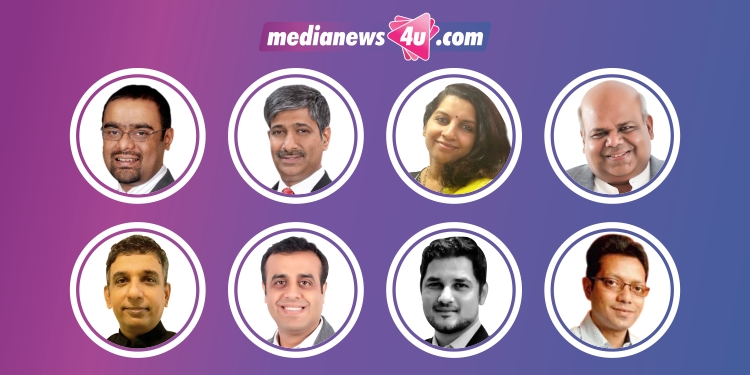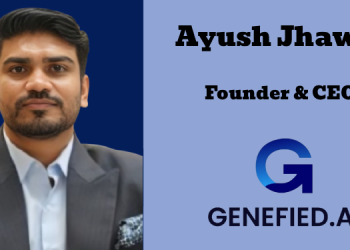There is a buzz in the market – every now and then – that clients are consolidating their digital mandates. Is it even possible, given the range of services and specialities that exist within digital? After all, digital is a term that stands for brand presence, messaging, interaction or commerce via any connected touchpoint.
As a former marketer states without wishing to be named, asking for one agency to handle all of digital is akin to asking one agency to handle all non-digital marketing and communications. We all know the answer to the latter. But there could be a ‘lead’ brand agency, say some practitioners.
MediaNews4u.com asked a handful of clients and agencies: Have marketers by and large consolidated their digital mandates – from the 8 to 10 digital agencies they used to work with? Is consolidation in the space feasible? And what’s the ideal situation in terms of the number of agency partners?
TVS Motors’ Aniruddha Haldar, Interactive Avenues’ Aparna Tadikonda, Matrimony.com’s Arjun Bhatia, Mirum’s Hareesh Tibrewala, Kotak’s Karthi Marshan, OMG’s Kartik Sharma, Performics India’s Pratik Dongaonkar and Fulcro’s Sabyasachi Mitter weighed in.
While several agencies we spoke indicated a trend of consolidation, clients emphasised the challenges in realising it.
The Many Digital Buckets
Arjun Bhatia, Chief Marketing Officer at Matrimony.com, counters the notion that brands worked with ‘8 to 10’ digital agencies, ever.
“I don’t think companies were using eight to 10 digital agencies at any point. That would really dilute the communication and will have too much of an overlap. Of course digital has too many super specialisations and it becomes difficult to work with just one or two because everyone can’t be an expert on all fields of digital,” he adds.
Aniruddha Haldar, Senior Vice President – Marketing, TVS Motor Company, breaks down the broad digital marketing mandate into three parts.
“We find that our relationships come in three forms,” he explains. The first is what he calls ‘Super Specialist’ partners who deliver cutting edge capability in a specific area (like ML, AI Voice etc.). The second, he terms ‘Anchor’ partners who co-own the brand performance and work of diverse but well understood aspects of digital marketing. “Lastly, the capability enhancers or innovation partners with whom we do a lot of exploratory and experimental work again in specific digital competencies,” he adds.
Within each space, there is a need today to work with multiple agencies. Is there a trend towards consolidation?
Karthi Marshan, President and CMO, Kotak, quips, “I think the buying is getting monogamous, especially on the performance side. But brand work still seems like a messy soap opera. Everybody’s in bed with everybody because nobody knows who knows the right moves.”
On the question of whether consolidation is feasible and necessary, he advises otherwise: “It’s not advisable, because we’re still in high school. It’s better to go on many dates, and learn from our varied experiences, before we commit.”
Four or five years back, brands were looking at hiring specialised digital agencies for each of their digital requirements while building internal teams to coordinate between these agencies, recalls Sabyasachi Mitter, Founder and Managing Director, Fulcro. However this had its own set of problems with individual activities getting siloed into their own echo chamber with overall digital strategy and brand impact getting diluted, he adds.
“The flavour of the season presently is for brands to consolidate with a few select agencies with more strategic KPIs which are better aligned with brand marketing ambitions,” notes Mitter.
Consolidation: Intent or Trend?
The choices are plenty but clients would do well to think through the chaotic consumer journeys of the present, notes Kartik Sharma, Group CEO, Omnicom Media Group India.
“While some marketers do believe that having multiple agencies results in a higher creative yield, it would be important to also note that while this may sound true to an extent, it also implies having multiple hands working on your brand without having a unified, macro view of the business and its goals and that isn’t beneficial for the brand,” he adds.
Hareesh Tibrewala, Joint CEO, Mirum India, concurs that brands are now consolidating their digital mandates, mostly with a single partner.
He adds, “Consolidation is very much feasible, especially when working with a network agency. The lead agencies can pull in capabilities from other parts of the network and create a unified team that can handle the entire digital mandate for the client.”
Sharma states that global businesses with a firm eye on the future are leading the way with the consolidation of digital needs. “We’re surely seeing a lot more brands today adopting an integrated, unified view of their business objectives and I expect this trend to proliferate further,” he notes.
He cites two reasons for consolidation of services: “To build and grow a brand in its entirety, it is critical to have a holistic understanding of the brand’s big picture and client needs – that is beyond just digital, and this is where partners/agencies on record come into play – helping effectively manage time, effort and resources.”
Multiple agencies on board can also pose challenges with reporting and ROI, he points out.
While ceding that specialists like tech and speciality-focused agencies bring their own unique set of USPs, even then, the OMG India head urges brands not to lose sight of the larger picture to synergise seamlessly.
While consolidation is the intent, multiple agency association is the reality of the present, says Aparna Tadikonda – EVP (South), Interactive Avenues.
“While marketers’ intent is to consolidate, and they are trying to move in that direction the fact is that it is still a multiple agency association owing to the capability and expertise of agencies, especially with brand and performance. Having said that, a lot of agencies are investing in showing bundled expertise though it will take some time to build that confidence with clients,” she explains.
Consolidation works very well for brands from a consumer journey lens as well as driving efficiencies, emphasises Tadikonda. “However, it needs to be done right and therefore new models of engagement need to be built,” she adds.
Pratik Dongaonkar, AVP, Performics India, notes that marketers previously worked with multiple partners based on specialised skill sets such as SEM, SEO and Social but often ignored the overlap of skill sets across their partner ecosystem.
He explains, “This resulted in inefficiencies, duplication of skill sets and wastage. However, the scenario has changed a lot over the past few years, with marketers playing an extended role within the organisation.”
With marketers being accountable for greater business efficiency and consistency, agencies are bringing in integrated capabilities to the table, he says.
Dongaonkar adds that brands are increasingly trying to move towards partners who can take ownership of overall business KPIs and looking at one partner they can work with across all digital channels.
What’s Next?
Asked about the specialised needs of a consumer-facing brand within digital and how many agencies it takes to cater to them today, Kotak’s Marshan says, “Advertising, content, thought leadership, performance, email, touchpoint design… How many agencies? Too many.”
In effect, there is admittance of the need for consolidation, but recognition that the ecosystem may not be ready for it yet.
Tadikonda reflects, “It is not about how many agencies but about different stages of the user journey and hence a seamless integration of solutions even if it is messaging and communication. Currently if there are four or five agencies working it will come down eventually to one or two.”
In the non-linear consumer process of today, a brand needs to cover all its bases, says Matrimony.com’s Bhatia.
“In my opinion it’s important to have one mainstream digital agency which can work with you for your overall digital strategy from both a brand (long term) and performance strategy (short term/sales). But you need to have additional relationships with one or two more agencies depending upon your industry and consumers. For example some industries may need a lot of influencer content so you need a partner that can scale that up for you across platforms while another industry may be more heavy on App install performance or SEO/SEM campaigns. So you need to pick and choose but keep it manageable,” he observes.
Fulcro’s Mitter adds, “In an ideal world having a single agency which brings in best in class capabilities across the entire digital services spectrum with a strong strategy and planning capability is the best option for brands. However, in the current agency landscape especially in India, this is a bit utopian as every agency is not equally good across all digital services.”
As an alternative, agency networks are offering single point services through a lead agency while aligning capabilities and skill sets from their local and global network agencies. Some larger independent agencies are also creating their own network of specialised partners, he observes.
Bhatia underlines, “Digital marketing is an ever-evolving field and no individual or for that matter agency can claim to have supremacy across its disciplines. So a complete consolidation looks difficult to me. One must keep experimenting with newer platforms and advertising solutions and scale ones that do well. For this you will come across niche providers who are very good in a certain area which can give disproportionate returns so one can’t afford to be complacent and bank on just one or two agencies because your competitors are trying everything.”
The need of every brand /consumer set is different leading to diverse need sets and hence possible number of partners/skill sets. So yet again, there is no magic bullet or formula available, underlines TVS Motors’ Haldar.
“But a clear vision of the digital roadmap aligned to consumer and business goals will prevent the phenomenon of chasing every new fad with a new partner or even worse getting comfortable with one partner and missing out on the next big thing,” he surmises.

















